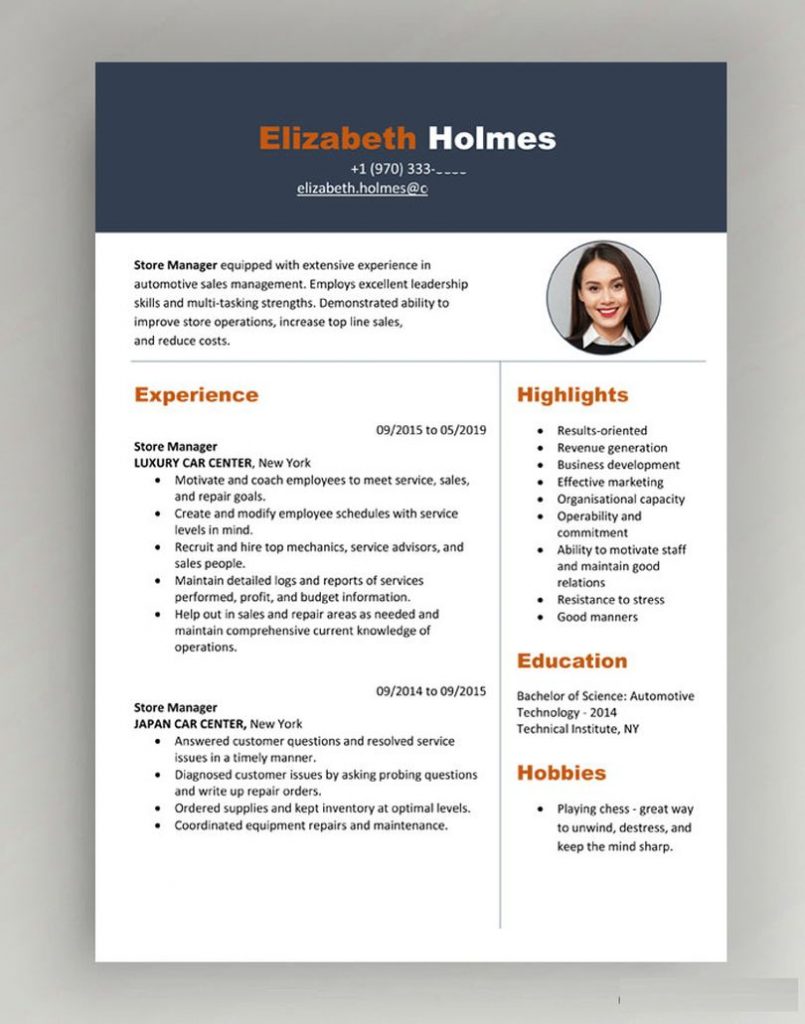If you’re looking for work in Canada, you’ll need a resume, not a CV, to start your search. This is simple for job seekers who already have a résumé from the United States, but it will necessitate additional revisions for those who have a more detailed CV. We’ll go over some helpful hints for writing a Canadian CV in this article. In addition, we’ve provided a sample resume at the end of the post that you may use to refine your chances of gaining a new job in Canada.
In Canada, there are just three sorts of resume formats you should use:
- Reverse chronological order is the traditional method.
- Functional resume with a strategic plan
- Hybrid resume with a good balance
The core information is the same in all of these formats, but the layout varies.
It is critical to select the appropriate resume format for the position. Your decision should be based on your years of experience and the type of job you’re looking for. We’ll go into more depth about using a different Canadian resume format later, but the reverse chronological resume format is the most common.
Most Canadian employers review your resume using an ATS (Applicant Tracking System) before a human ever sees it. However, according to the electronic sorting system, approximately 75% of resumes sent are not examined by the recruiter or hiring manager. Frequently, the candidate is qualified, but the summary is not ATS-friendly.
When should you utilize a reverse chronological resume format in Canada?
A reverse chronological resume lists your work history in reverse chronological order, beginning with the most recent job. If you have some work experience, this is the perfect resume format for you. However, if you are a recent college graduate or have significant employment gaps, the hybrid or functional resume forms should be considered.
Also Read- Common Questions during Job Interview in Canada
When should you utilize a hybrid or functional design? Format for a resume in Canada
The functional resume is a flexible structure that emphasizes your abilities and qualifications rather than your work history. While your work history is still provided, it is usually listed after the section on talents and education. This puts more emphasis on those skills, demonstrating your aptitude for the job. As a result, newbies to the workplace and those changing careers might occasionally benefit from this alternative.
The extended reverse-chronological job experience portion remains on a hybrid resume, but it is no longer the main focus. Instead, besides the technical skills or core competencies portion, the skills section is enlarged to contain an overview of qualifications.
However, it would help if you mentioned that many specialists in Canada encourage job searchers to use a reverse chronological structure. Regardless of the format you use, a hiring manager will look for the following information on your resume:
-Name, address, and phone number (phone, email, city and province, and LinkedIn URL)
Skills
Experience
Education
The top three things that Canadian recruiters and employers want to see on a resume
If you know what Canadian companies like to see, you can increase your chances of securing your dream job. This might assist you in tailoring your Canadian resume format to meet your needs. On your Canadian CV, you must answer the following questions:
-
Complicated abilities
Make sure the technical skills required for the job are highlighted in your Canada resume format. These could include data analysis, language abilities, computer skills, or other necessary certifications.
-
Soft abilities
Employers in Canada value people skills. Communication and collaborative abilities and problem-solving, flexibility, and the ability to learn and adapt are all examples of soft skills. Include examples, results, and measurements to demonstrate these essential skills across your resume.
-
Professional credentials
Employers in Canada, like most other countries, place high importance on suitable professional qualifications and achievements. So make sure you’re qualified for the job you’re applying for by the appropriate institutions.
Summing up- Employer friendly resumes can help you land in a Job much faster
Canada’s resumes are pretty comparable to those in the United States but drastically different from CVs in other nations. Therefore, employer-friendly resume formats should be used and highlight your strengths. You can improve your chances of getting an interview and earning a job in Canada by following these resume format suggestions.

